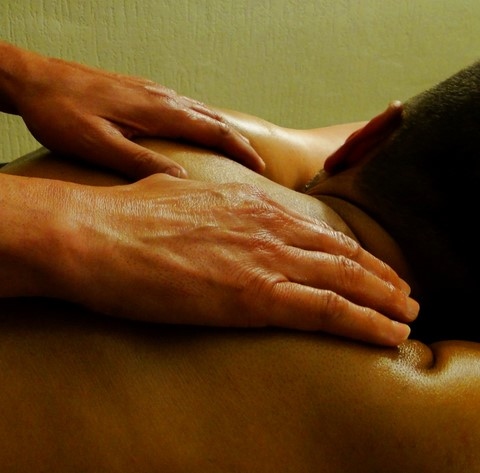The origins of the massages we propose
The Californian massage
In the early 1970s, at the Esalen Institute of Big Sur, California, Margaret Elke has created the outlines of the Californian massage. The purpose of this massage was to reconnect the soul with the body.
Inspired of the Swedish massage, Californian massage has preserved several of its techniques. There are: the foulages, the kneading and rotation friction that allow oxygenation of tissues, as well as the touches and crept pressures that leads to the relaxation but also activates the flow of fluids.
Le massage Deep Tissues
Some describe the deep massage Deep Tissue as a Swedish massage more strong. Others talk about sports massage.
In fact, the deep tissue massage is opposed to Swedish massage. This one works in kneading the muscle volume, while the massage deep tissue expands its action on the connective tissue, fascia, tendons and also on the joints.
The deep tissue massage is inspired from the works of Dr. Ida Rolf (the "Rolfing"), Dr. Janet Travell ( "trigger points"), to name a few.
In the therapeutic field, deep tissue techniques are used to treat a targeted muscle or joint disorder. In its welness version, the deep tissue massage treats the body as a whole for a rebalancing action.
Ayurvedic massage
Science of life in sanskrit, Ayurveda is an holistic health system. It has its roots more than 5000 years ago in the tradition of the old India, and more recently in the Vedas, the four books of Brahmanical wisdom and religion.
The Ayurvedic massage puts its interest in what some call the quantum body, IE to the flow and balance of energy in the body.
In its welness version, the Ayurvedic massage is rebalancing. It is adapted to the nature of each one (or prakriti) but also to the imbalances of the moment (or vikriti). The pressure, the speed of execution, the massed areas, but also the oil used and the temperature are different from one person to another.
Kashmiri massage
Taking its origins in Indo-Pakistan, specifically from the Shaivism, the Kashmiri massage has its roots in the Hindu Tantric philosophy, and was given between people of opposite sexes: the person who mass becomes the incarnation of god Shiva and the one is massaged becomes the incarnation of goddess Shakti.
Protocols and conditions of massage were adapted time after time to our western culture trying as possible not to distort the sense of the massage. Kashmiri massage joins the principles of tantric yoga and focus essentially on the chakras (7 energy centers) and marmas (108 stimulation points similar to acupuncture points).
While Ayurvedic massage avoids any touch on the chakra located at the bottom of the spine (the root chakra), the Kashmiri massage does not avoid this area which contains the kundalini, the most powerful energy, corresponding to the survival of the species.



